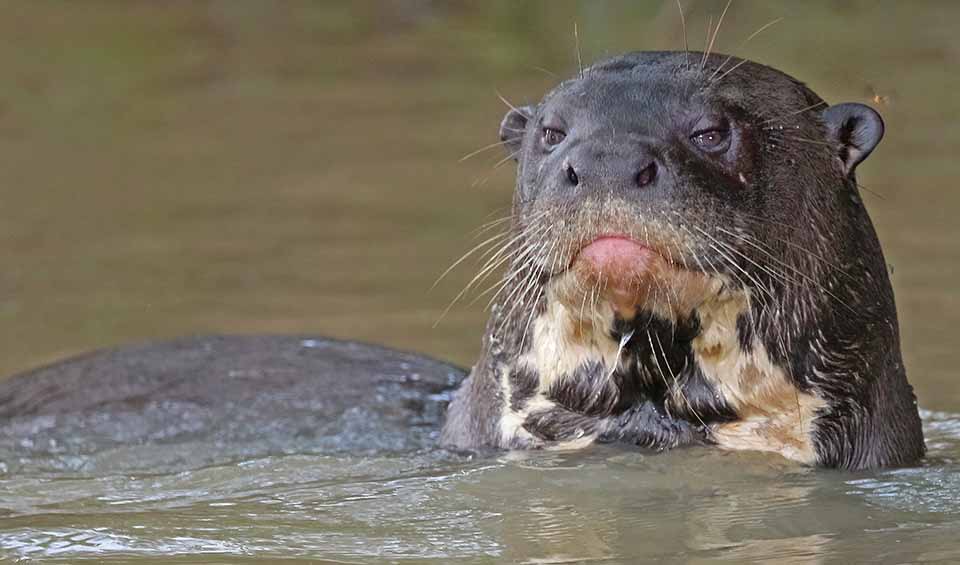Standing as the largest member of the weasel family, it is a formidable presence in the waterways of South America. Often referred to as the “river wolf” due to its impressive size and predatory prowess, the giant otter plays a critical role in the aquatic ecosystems of its habitat. Found primarily in the Amazon, Orinoco, and La Plata river systems, these otters are adapted to a life closely intertwined with the riverine environment.
Giant otters can reach lengths of up to 1.7 meters (5.6 feet), not including their substantial tail, which can add an additional 70 cm (28 inches) to their length. Their fur, a lustrous chocolate brown, is among the finest in the animal kingdom, with a unique pattern of creamy white markings on their throat and under their chin that serves as a personal identifier among individuals. This fur, while beautiful, played a part in their historical decline due to the fur trade.
The giant otter’s physical adaptations are a testament to its aquatic lifestyle. Its tails, shaped like wings, along with its powerful, webbed feet, propel it through the water with grace and speed, allowing it to cover distances of 100 meters (330 feet) in under 30 seconds. This agility is crucial for hunting and evading potential threats in its environment.
Giant otters are social animals living in family groups that can number up to 20 individuals. These groups are tight-knit, with strong bonds between members, and are led by a dominant breeding pair. Communication within the group is vital, consisting of a complex array of vocalizations that serve various purposes, from coordinating hunting efforts to signaling alarm.
As top carnivores, their diet predominantly consists of fish, but they will also hunt crabs, snakes, and occasionally small caimans. Their role as predators helps maintain the balance of aquatic ecosystems, controlling fish populations and contributing to the health of their riverine habitats.
Distribution
 Argentina
Argentina Bolivia
Bolivia Brazil
Brazil Colombia
Colombia Ecuador
Ecuador French Guiana
French Guiana Guyana
Guyana Paraguay
Paraguay Peru
Peru Suriname
Suriname Uruguay
Uruguay Venezuela
VenezuelaRecent Updates
- After a 40-year absence, giant river otters have returned to Argentina, with a family of four released in Iberá as part of a rewilding effort to restore the once-extinct species to its native habitat.
Anything we've missed?
Help us improve this page by suggesting edits. Glory never dies!
Suggest an editGet to know me
Terrestrial / Aquatic
Altricial / Precocial
Polygamous / Monogamous
Dimorphic (size) / Monomorphic
Active: Diurnal / Nocturnal
Social behavior: Solitary / Pack / Herd / Group
Diet: Carnivore / Herbivore / Omnivore / Piscivorous / Insectivore
Migratory: Yes / No
Domesticated: Yes / No
Dangerous: Yes / No




